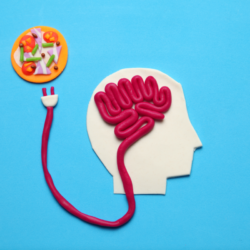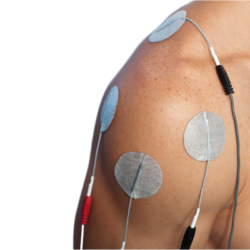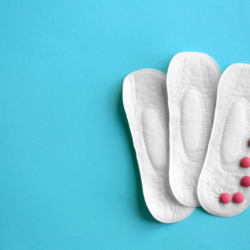“Are you on your period or what? It’s a question women could do without, but one they’ve all been asked when they’re a little more irritable than usual. The reason for this prejudice is that many women are on edge or become hyper-emotional when they have their ‘ragnagnas’. But given all the stresses they have to endure at this time of year, it’s perfectly natural!
In fact, the more or less abundant flow of blood over several days can be accompanied by a host of problems: hot flushes, abdominal cramps, swelling of the breasts and/or stomach, nausea, vomiting, diarrhoea or constipation, headaches, low morale and tiredness, even eating and digestive problems, etc. But the arrival of the period is just one phase in an even greater phenomenon: the menstrual cycle. It comprises different stages, each with its own set of hormonal variations. That’s why some women experience mood swings during their period, while others experience them before or after.
Take a closer look at a woman’s menstrual cycle to better understand her body and identify her fertile moments!
What are the different phases of the female cycle?
The menstrual cycle, a complex and essential facet of women’s health, plays a crucial role in fertility. It extends from the first day of menstruation to the day before the start of the next period. It generally lasts between 26 and 35 days, with an average of 28 days, and is divided into four distinct phases:
Pre-Ovulatory or Follicular Phase (Day 7 to Day 13):
- After the end of menstruation, the body enters a period of renewal and preparation for a potential pregnancy. This phase, marked by an increase in oestrogen, stimulates the production of an egg while developing the endometrium, the lining of the uterus ready to receive an embryo. It’s a period often associated with renewed energy and good humour, reflecting the beneficial hormonal variations.
Ovulatory phase (Day 14 to Day 20):
- The ripe egg is released and travels to the fallopian tubes, marking the most fertile period of the menstrual cycle. It is during these days that the chances of conception are at their highest. While some women may experience an increase in libido, others may experience discomfort such as mild pelvic pain.
Luteal phase (Day 21 to Day 28):
- This post-ovulatory stage is characterised by a rise in progesterone, preparing the body for a possible pregnancy. If the egg is not fertilised, this phase can lead to premenstrual symptoms such as fatigue, reduced energy and mood swings, reflecting the body’s hormonal changes.
Menstrual phase (Day 1 to Day 7):
- In the absence of fertilisation, the egg disintegrates and the endometrium is evacuated in the form of menstrual bleeding. This phase, which generally lasts from 3 to 7 days, signals the start of a new menstrual cycle.
A thorough understanding of these phases is essential for effective menstrual symptom management and family planning. Each phase brings its own challenges and opportunities, influencing not only fertility but also general well-being.
For more information on menstrual symptom management and natural remedies, visit our collection of specialist products on Soin-et-Nature.com.
Common signs and symptoms of the menstrual cycle
The menstrual cycle brings with it a variety of signs and symptoms, which can affect both body and mind. Recognising these signs is crucial to better understanding and managing your cycle.
Physical changes
During the menstrual cycle, women may notice a number of physical changes. The most common include abdominal pain or cramps, often experienced shortly before or during menstruation. These sensations, sometimes referred to as dysmenorrhoea, can vary in intensity from one woman to another.
Another common symptom is breast swelling or tenderness, usually experienced during the luteal phase, due to hormonal fluctuations. Similarly, hormonal changes can lead to headaches, feelings of tiredness and digestive problems such as constipation or diarrhoea.
Changes in the skin and hair are also common. Some women experience an increase in acne before their period, while others may experience changes in hair texture or hair loss. These symptoms, although often temporary, can have a significant impact on daily well-being.
Emotional changes
Emotional changes are also an important component of the menstrual cycle. Premenstrual syndrome (PMS) is a group of emotional and physical symptoms that generally occur in the week before your period. These symptoms include mood swings, irritability, anxiety and episodes of sadness or depression.
These emotional fluctuations are mainly due to variations in hormone levels, such as oestrogen and progesterone, during the cycle. It is important to note that the intensity of these symptoms varies greatly from one woman to another, and some may not experience them at all.
Emotional fatigue may also be present, often exacerbated by sleep disturbances linked to the menstrual cycle. Many women report a reduction in the quality of their sleep during this period, which can exacerbate emotional symptoms.
By recognising and understanding these physical and emotional changes, women can better manage their menstrual cycle and improve their quality of life. Strategies such as cycle tracking, a balanced diet, regular physical activity and good stress management can be of great help in this process.
Menstrual cycle and fertility
Understanding the link between the menstrual cycle and fertility is fundamental for any woman wishing to conceive or understand her body. The menstrual cycle is not just about menstruation; it plays a crucial role in fertility.
Understanding your fertility peak
Peak fertility is the period of the cycle when the chances of conceiving are highest. This period is around ovulation, when the ovary releases an egg. For most women, ovulation occurs halfway through the menstrual cycle, but this can vary.
Identifying your fertility peak may require careful observation of body signs and cyclical changes. Using menstrual cycle tracking applications or ovulation tests can be helpful in determining this fertile window more accurately. These tools help to recognise the days that are most conducive to conception, providing information based on body signals and cycle patterns.
Ovulation signs
Ovulation signs are physical indicators that can help identify the fertile period. One of the most common signs is an increase in cervical mucus, which becomes lighter, more elastic and egg-white in colour. This change in cervical mucus makes it easier for sperm to move towards the egg.
Another sign is a slight increase in basal body temperature after ovulation. Many women use special thermometers to monitor their temperature every day and detect this slight change.
Some women also experience pain or a feeling of heaviness in one side of the abdomen, known as ovulation pain or mittelschmerz. Although not a reliable indicator for everyone, for some it can be a clear sign of ovulation.
What is amenorrhoea?
Amenorrhoea is the medical term for the absence of menstruation. It is a symptom, not a disease, and can occur for a variety of reasons, such as hormonal variations, eating disorders, pregnancy or intense stress. It can happen at any age after puberty and before the menopause.
If a woman of childbearing age has not had her period for three months or more, this may require a consultation with a healthcare professional to rule out any underlying pathology. Amenorrhoea is not inevitable and solutions exist, often tailored to the specific cause of the symptom.
The therapeutic approach to treating this condition can range from stress management to more complex medical interventions, depending on the underlying cause. It is also possible to support women’s well-being through natural methods, including the use of certain adapted food supplements, which can be consulted on specialist sites such as Soin-et-Nature.
Food supplements for a healthy menstrual cycle
Knowing your fertile days will make it easier to plan a pregnancy. Similarly, knowing when and why you sometimes feel down helps you to accept and calmly get through the physiological and psychological ups and downs associated with the female cycle.
Of course, everyone’s experiences and feelings throughout the menstrual cycle differ. For some women, menstruation and ovulation pass without the slightest discomfort. For others, on the other hand, menstrual symptoms can be recurrent and sometimes even incapacitating. To be sure that these cycle problems are not linked to a pathology, you should consult a gynaecologist.
There are also food supplements and aromatherapy products to help you cope better with the hormonal variations of the menstrual cycle and the discomfort they cause. These include
| Product name | Key Ingredients | Potential Benefits | Recommended Use |
|---|---|---|---|
| OLIGOBS 28 Premenstrual comfort | Vitamins (B6, E), Magnesium, Chaste tree | Reduction of premenstrual symptoms, hormonal balance | Daily use during the premenstrual phase |
| Pranarom OLEOCAPS 5 Menstrual Cycle ORGANIC | Essential oils (Sage, Lavender) | Relief of menstrual pain, hormonal balance | Occasional use to relieve pain |
| Santarome Organic Menstrual Spray | Plant extracts (Raspberry, Alchemilla) | Relief of menstrual symptoms, hormonal support | Regular use to regulate the menstrual cycle |
The menstrual cycle, with its hormonal fluctuations and varied symptoms, can sometimes be a challenge for many women. Fortunately, scientific studies have shown that certain food supplements can offer effective relief. Here’s a summary of the latest research on the key ingredients in food supplements and their beneficial effects on menstrual cycle symptoms.
- Vitamin B6: One study found that taking vitamin B6 (80 mg) daily can lead to a significant remission of premenstrual syndrome (PMS) symptoms. In this study, 60% of women experienced a complete reduction in PMS symptoms after three cycles of treatment. 1()
- Magnesium: Magnesium has been shown to improve mood during PMS. Participants in one study who received a magnesium supplement experienced a significant reduction in PMS-related psychological symptoms, such as distress and negative affect. (2)
- Chaste tree (Vitex agnus-castus): A systematic review of randomised controlled trials confirmed the efficacy of chasteberry in treating both PMS and premenstrual dysphoric disorder (PMDD). The studies concluded that chasteberry is a safe and effective treatment for these conditions. (3)
- Sage (Salvia officinalis) essential oil: In a randomised clinical trial, Salvia officinalis was tested for its efficacy against PMS. The results showed a significant reduction in the physical and psychological symptoms of PMS in women who took Salvia officinalis capsules. (4)
- Lavender essential oil (Lavandula angustifolia): Another study examined the effect of lavender aromatherapy on premenstrual emotional symptoms. The study found that inhaling lavender can improve the activity of the parasympathetic nervous system and reduce symptoms of depression and confusion typical of PMS.
These results underline the potential of dietary supplements and essential oils in managing the menstrual cycle. However, it is crucial to consult a healthcare professional before starting any treatment, to ensure that it meets your specific needs and has no contraindications.
References
- https://pubmed.ncbi.nlm.nih.gov/31928364/
- https://pubmed.ncbi.nlm.nih.gov/2067759/
- https://pubmed.ncbi.nlm.nih.gov/29063202/
- https://pubmed.ncbi.nlm.nih.gov/30572339/
- https://pubmed.ncbi.nlm.nih.gov/23724853/







